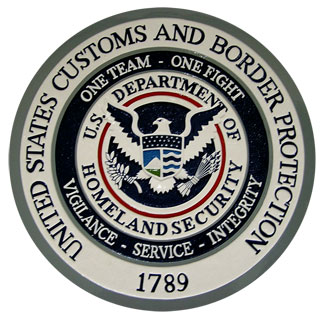FDA/Customs Country of Origin Confusion on Drug Imports
April 1st, 2013 // 3:30 pm @ jmpickett
Learn About PREDICT – FDA’s New Import Screening Program
April 1, 2013
When drugs are imported into the US, there is a lot of information that needs to be reported to US Customs and to FDA. The information is collected and transmitted by computer, usually done by the importing company’s designated broker. One of the most important aspects of this information that goes to Customs and FDA is the country of origin for the imported drugs. The answer to this question is often complex. In some cases, FDA and Customs do not agree on the origin of the product. It is not always easy to reconcile the requirements of Customs and FDA, but we as drug importers need to do so.
The determination of country of origin and drug product labeling is a good example of where Customs and FDA don’t always agree. FDA defines the origin of a product based upon the final country of manufacture. FDA also mandates that any finished drug product in final packaging must identify the name and business of the maker, distributor or packer.
Learn About PREDICT – FDA’s New Import Screening Program
Customs, on the other hand, usually thinks of the country of origin as the final country where drug processing caused a major transformation. Customs says that the product must be clearly labeled with any foreign country of origin so that they buyer can make a proper decision to purchase or not.
Example: Based upon FDA origin/labeling mandates, a German-produced API that is processed in Ireland by adding in excipients, and also mixing and putting the bulk API into capsules and packing it for sale would be considered by FDA to be from Ireland, because of the manufacturing done in Ireland. If the finished API drug is brought into the US, FDA will require it to say it was manufactured in Ireland by Drug Company X, and then distributed by Company Y in Salt Lake City, UT, for example.
Customs would have a totally different view of the country of origin of this drug. Customs will apply what it terms a substantial transformation test. When it looks at the production in more than one country, Customs will require an importer to figure out a single origin country. This is based upon where the drug was ‘substantially transformed.’
The application of this test under our customs laws is rather subjective and is going to depend on the exact circumstances. However, this is strong Customs precedent to indicate that the origin country of an API drug product is the origin country of the API.
Customs has determined in the past that the production operations of adding an excipient, mixing or encapsulating the API and packaging don’t really result in a transformation of that API. Customs states that the character of the API did not change.
In our example above, Customs would say that the country of origin for that finished drug product would be Germany. During importation, the custom’s broker for the company needs to be advised of FDA origin and Customs origin for proper reporting to both agencies.
Even worse, FDA has labeling instructions that mandate listing the manufacturer, packer and distributor’s address. Customs has mandates for foreign country of origin that kick in when the address or location whows on the label that could confuse the final purchaser where the drug was actually made.
Overall, importers of drugs need to navigate the complex requirements of several federal agencies. Dealing with these issues with proper training up front can cut down on Customs penalties, cut costs and boost FDA compliance.
On a related note, there is a new FDA system called PREDICT that has greatly changed how FDA screens drugs and devices at US ports. We have a very informative Webinar on this system coming up April 25.
Upcoming Expertbriefings.com Webinars
- April 3 – Audit Your Lab Like an Expert FDA Auditor: A Roadmap to Lab Compliance
- April 10 – Avoid the CDRH eCopy Chaos – How to Prepare a Compliant eCopy Submission
- April 16 – The Quality Manager Gets Fired, the $100,000 Compliance SNAFU, and 21 Tips and Tricks for Your Next Audit
- April 18 – Why You May Want to Move Your Pharma Company to Kansas – 483 and Warning Letter Trends
- April 25 – How to Survive PREDICT – FDA’s New Import Screening Program
- April 30 – FDA Hands Out CAPA 483s Like Candy – Avoid Them With a Closed Loop CAPA SystemÂ
- May 1 – Avoiding Warning Letter Disasters With a Strong Contractor Quality Agreement
- May 7 – FDA Recall Chief Update – How to Design a Bulletproof Product Recall Strategy



